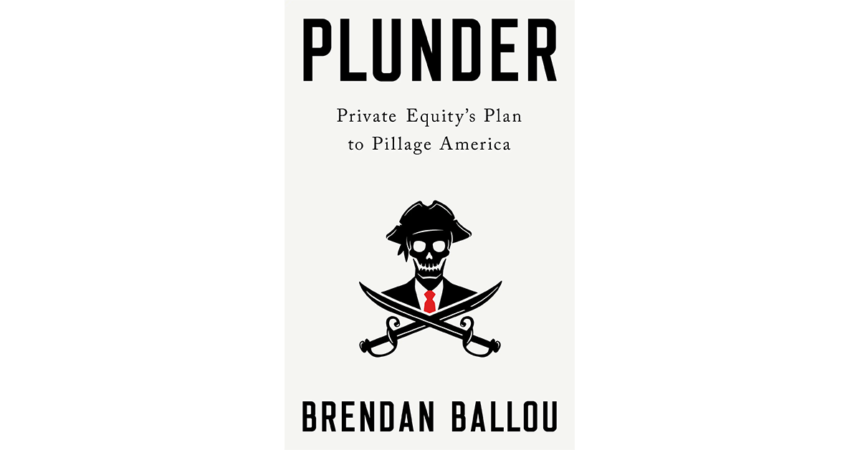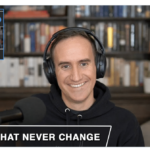Plunder: Private Equity’s Plan to Pillage America. 2023. Brendan Ballou. PublicAffairs.
People stop in their tracks when they see the cover of the book I’m reading — Plunder — with its frightening depiction of skull and crossbones. “What are you reading? It must not be happy subject matter!”
Private equity investing is not everyday talk among friends — but considering its size and growth among investment choices and its possible impacts on the broader economy, it should be everyday conversation among investment professionals.

Author Brendan Ballou presents a meta-analysis of the worst of private equity investment practices, thus compelling investors to take a deeper look into their illiquid private equity commitments. With experience as a federal prosecutor and special counsel for private equity at the US Department of Justice, Ballou presents a comprehensive study that will influence decision makers’ analytical and ethical approach to the asset class. It will shake you up. It also serves as a call to action to monitor specific and repetitive activities of private equity that benefit the operators and no one else.
Like me, you may have a substantially different personal history with private equity investing than the author. More than 30 years ago, corporate executives and investors were seeking systematic ways to improve operating and financial efficiency. The concept of kaizen was sweeping Corporate America, even though it originated in Japan. It specifically dealt with the “continuous improvement” of a business through the elimination of waste. Just-in-time (JIT) inventory management became a buzzword in corporate earnings calls. This sort of tough medicine was the cure for what ailed US business. Consider the plundering by such “pirates” as “Chainsaw Al” — Albert J. Dunlap, infamous corporate raider and author of Mean Business: How I Save Bad Companies and Make Good Companies Great. We read of him almost every day when he was active in his business dealings, which seemed so mean to existing employees, suppliers, and customers. Still, it was widely thought that such practices were needed.
The present reality and possible future of private equity investing in the United States are Ballou’s focus. He presents industry-specific examples of private equity at its worst, prompting readers to evaluate their own experiences with it, both personal and professional. As he delves into the heavily affected industries— specifically housing, nursing homes, prisons, retailers, for-profit education, and health care — the persistent “tools of the trade” of typical private equity operation emerge: leasebacks, dividend recapitalizations, strategic bankruptcies, tax avoidance, roll-ups, and murky corporate structures.
Yet, Ballou also acknowledges the possible benefits of private equity investment, such as providing access to funding (or access at a lower cost), expert management by industry specialists, efficient global sourcing, operational and financial improvements, and even improved corporate and employee relations. Customers may benefit from greater consistency in product, faster access, and better pricing. Private equity firms can potentially profit from economies of scale and professional management at all levels, but in the cases presented in Plunder, their way of doing business results in disastrous conditions for employees and clients and the death of once viable, cash-rich companies.

The carried interest loophole is probably the most prized tax benefit of private equity; it affects a substantial portion of the money made in the business. The typical fee of 2% of assets under management is taxed as ordinary income, while the private equity firm’s 20% share of profits earned above a specified threshold is taxed at the lower capital gains tax rate. Talk of ending this tax advantage has been floating around Congress for at least 20 years. Notwithstanding Dodd–Frank regulations and the 2019 attempted passage of the “Stop Wall Street Looting Act,” the plunder continues. The author notes that private equity is a potent force in congressional matters; these firms have donated more than $896 million on a bipartisan basis to candidates and members since 1990. Additionally, private equity could pose systemic risk to the economy, particularly because of its expansion into insurance, retirement funds, and private credit.
The author’s wish list of solutions to private equity abuses seems like a litany of impossible dreams to me, especially considering talk among some in Congress of achieving permanent spending cuts by reducing or eliminating certain departments that oversee business. Nevertheless, to constrain private equity firms’ abuses in specific industries and prevent private equity’s worst excesses, substantive actions could be taken through the Department of Justice, Department of Health and Human Services, the Securities and Exchange Commission, and most notably, the Internal Revenue Service and the Treasury Department. Some of Ballou’s suggested solutions are more realistic and practical than others. I commend the author for releasing this exceptionally well researched exposé of the industry. His extensive notes expand the book’s content and impact. Plunder has made me question the merits of private equity, an investment I originally considered to have a high level of investment integrity and a positive influence on corporate governance.
If you liked this post, don’t forget to subscribe to the Enterprising Investor.
All posts are the opinion of the author. As such, they should not be construed as investment advice, nor do the opinions expressed necessarily reflect the views of CFA Institute or the author’s employer.
Professional Learning for CFA Institute Members
CFA Institute members are empowered to self-determine and self-report professional learning (PL) credits earned, including content on Enterp








